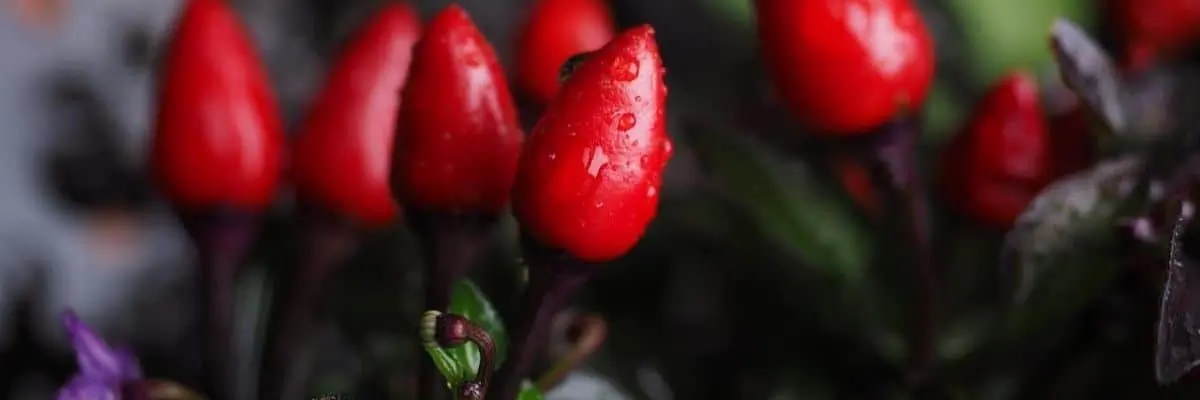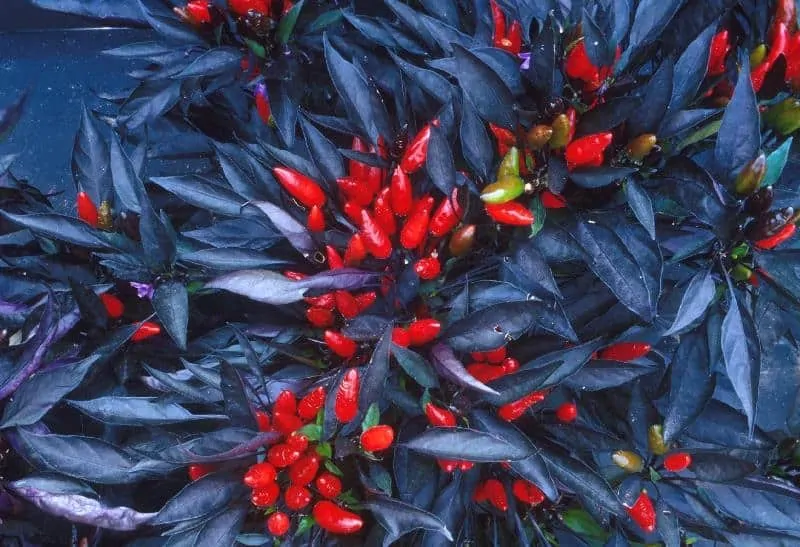There are 100s of different Pepper Plants species in the Capsicum genus. They are different in shape, size, color, as well as taste. If you want to grow Pepper then check out my previous post How to grow Chili Pepper plants faster from seeds. Growing a Pepper plant from seed is very easy although you may face some problems during the growth phase. Today we will discuss these problems mostly caused by Pests and Diseases in Chilli Pepper Plants. If your Chilli plants are suffering from any problem then this article will help you through the treatment.

check out my previous post: How to Grow Green Beans: Phaseolus vulgaris?
Factors that cause Problems in Chilli Pepper Plant
Every plant problem has some root cause. There are several factors that can damage or cause problems to your pepper plants. You should be aware of these and act soon to protect your chilies.
- Infected Seeds or Seedlings
- Over Watering
- Over Fertilization
- Water Logging
- Low Sunlight
- Improper Plant Spacing
Infected Seeds and Seedlings
Infected Seeds and Seedlings are the main sources of disease spread in pepper plants. Usually, old seeds get fungal spores which can spread from roots throughout the plant.
Similarly, infections can also spread through infected pepper seedlings. Diseased seedlings can never yield good pepper quality.
This problem can be easily avoided with fresh healthy seeds and seedlings. You must buy the seeds and seedlings from trusted plant sellers.

Overwatering
Too much watering is always responsible for a lot of plant problems. Pests and fungal attacks are very common with overwatered plants. Sometimes only a small drop after a water splash can cause a fungal infection. The problems can worsen with subsequent watering. Further watering to an infected chili plant can spread the diseases to healthy ones.
Over Fertilization
Too much fertilizer whether organic or chemical can cause problems to your pepper plants. Chemical fertilizers can directly burn and damage the plant. So you can keep it at the bay whenever not in use.
Although organic compost seems alright for the plant. This is certainly not true In fact, too much compost can also damage the plants. They not only feed the plant but also encourage bugs and insects to attack the surrounding plants.
Waterlogging
Waterlogging and soggy soil are not good for any plant. It is an aftereffect of overwatering. Waterlogging is a prime source of root rot disease in pepper plants. Grow your chilies in raised garden beds and keep the roots away from water.
In containers amend the soil with sand to increase drainage. Also, keep the bottom drainage hole clean and unclogged to avoid waterlogging or soggy soil.
Low Sunlight
The scarcity of sunlight or low light is insufficient for Pepper plants. Improper lighting can fade the leaf color and stop blooming. Other than that this situation can increase pest attacks. Shady moist plant foliage acts as a breeding ground for many pests and insects.
Proper sunlight can reduce pest buildup by keeping the plant dry. Pepper plants require a lot of sunlight at least 6 to 8 hours every day.
Improper Plant Spacing
Crowded pepper plants are always prone to pests and fungal diseases. Many pests prefer to breed and feed on these crowded pepper branches. It can also inhibit bud and fruit development. Proper spacing between two adjacent pepper plants can prevent many common plant problems. You should keep at least an 8 to 10 inches gap between each pepper plant. Though ideal space gap between two chili plants is 12 inches.
Almost 80 to 90% of common pepper plant diseases can be easily treated by controlling these factors. Prevention is better than cure, so treat these factors as soon as you see any sign.

Also read: How to Germinate Green Bean Seeds?
Common Pests Problem in Chilli Pepper plants
Several pests can attack a pepper plant. Although, a chili or pepper plant is not prone to any serious pests problems. Still, there are some and you should worry about those.
Common Chilli Pepper pests that can irritate any gardener.
Aphids (Myzus persicae )
Aphids are tiny light green or transparent bugs that feed on plant sap. These bugs can suck the essential nutrients from the fluids. They usually don’t kill the plant but slow down its growth. If the situation is worse then the top leaves of the pepper plant can fade and curl. Neem oil and soap spray are effective for the initial treatment of Aphids. Pruning infected branches and treating the rest with pesticides can help with severe aphid attacks.
Mealybugs
Mealybug is another nasty white bug that feeds on plant sap. They look like a tiny snowball. They like moist leaves and tender stems. Treating these bugs is not so easy. They are resistant to common pesticides. Start treatment with controlling the water supply. Avoid overhead watering from the top of the plant. Spray or rub these waxy bugs with rubbing alcohol. Once the protective covering is removed treat them with neem oil and pesticides. It is better to treat these bugs in the initial stages. Latter the pepper plant may not recover from the severe damage.
Spider Mites
Spider Mites (Tetranychus urticae ) and Yellow mites are a few other tiny pests that can damage pepper plants. They attack tender leaves and soft stems. Leaves turn pale yellow due to these mites. These arachnids thrive in a dusty environment. Cleaning of dirt from the foliage can help you in avoiding mites attack. Neem oil can help although you should use a composite Difenthuran and Chlorphenapire with proper dilution. Yellow and white mites should be treated with Buprophagin or Milbemectin.
Tobacco Caterpillar
These caterpillars are disastrous for the tender pepper plants. A couple of these worms can eat the entire plant overnight. Handpicking is helpful with initial treatment. In severe conditions, you can use Novluran and Imamectin Benzoate. Mix the compound in water at 1 to 3% dilution. Read the details before using these chemical pesticides.
White Fly and Thrips
These tiny white flies feed on plant sap. Leaf curl and shunted growth are inevitable with these bugs. Prevention is better as curing an infected plant is not easy. At least you will need some chemical pesticide otherwise nothing can be done.
Imamectin Benzoate, Fipronil, Difenthuron, and Acitameprid can help in the treatment of these bugs.
Fruit Borer Worms
These worms are larvae of moths and beetles. The new larvae enter a soft pepper fruit and continue to grow inside it. The worms eat and grow within the fruit. Holes in pepper fruits are an indication of fruit borer worms. Composites of Imamectin Benzoate and Flubendamide can help the treatment of these worms. You can not save an infested fruit although you can save others with proper treatment.

Check out: How to Grow Sprouts in a Sprouting Tray or Box?
Chilli Plant Disease, Symptoms and solution
Damping Off
Damping-off is deadly for pepper seedlings. It happens due to soggy soil. Rhizoctonia solani is responsible for damping-off pepper plants. The infected plants start rotting at the soil line.
Control overwatering and treat the batch with pesticides. Also, treat the seeds with fungicides and Trichoderma and dry them properly before sowing. You can use Trichoderma and Carbendazime to control the Damping-off.
Fruit Rot
Fruit rot is another common disease in pepper plants. The problem can become very serious that can destroy entire crops in a few days. Treat the infected plants with Carbendazime and Mencozeb as early as possible. The problem can worsen with time. So treat the plant before the entire crop gets destroyed.
Powdery Mildew
White or light brown powdery deposits on the leaves can damage the crops. Wash off the plant with a jet spray or fast-flowing water. Let the plant dry in full sun to avoid further fungal damage.
Carbendazim and Mencozeb work great for the treatment of Powdery mildew. Although if you take preventive measures then you won’t require any of these chemical treatments.
Early Blight and Late Blight
The blight problem is easy to observe in the plants. Dark Brown patches expand from leaves to stem. It can be fatal for the pepper plant. An infected pepper plant is hard to treat. The problem can spread from one plant to another. It can spread with flowing water or direct contact with the infected plant.
You should use Azoxistrobin with Tebuconazole to treat the blight problem at early stages. If the pepper plant is heavily infected with blight then it is better to discard and burn the plants. Don’t grow pepper or any capsicum genus plant in the infected soil for at least 2 successive seasons.
Cercospora Leaf Spot
Small light yellow or brown spots on the leaves are an indication of Cercospora leaf spot. This problem is not fatal for the plants, especially at the initial stages. Though it can slow down the growth with further infestation.
Carbendazim and Mancozeb are useful to treat leaf spots.
Anthracnose
Anthracnose is deadly for the plant, especially the pepper fruits. Dark brown patches emerge on the surface and turn into severe rot.
Treat the infected plants with Azoxistrobin, Difenoconazole, and copper hydroxide.
Die Back
Drying and shrinkage of early immature pepper fruits are commonly called dieback. This can be deadly for the plants. The plant may not die instantly but it will lose all of its fruits.
Dieback problem can be be treated with Azoxistrobin, Difenoconazole, and Tebuconazol.
Fusarium Wilt
Wilting is easy to identify on pepper plants. The plants look pale and continuously lose all the leaves. The infection spreads from infected soil. So biological treatment of the soil and seeds is useful to control Fusarium wilt.
Different forms of Trichoderma and Copper oxychloride can be used to control Fusarium wilt. A severely infected pepper plant can not be cured so the last option is to discard the plant.
Can you save an Infected Chilli Plant?
Yes, It is possible to save an infected Chili Pepper plant. Rapid treatment like essential deadheading, spraying, Thining, and cleaning can help throughout this process.
First of all prune most of the infected branches. Remove dead damaged foliage. Spray the plant with Neem oil, Epsom salt, and some contact fungicide. Let the foliage dry for a couple of hours. Once the foliage is perfectly dry spray again with General-purpose pesticide.
Next thin space between infected plants. Remove any grass or weeds from the soil. Dig top 2 -3 inches of soil and mix a pinch of fungicide in it. Water the soil carefully and don’t splash it on the leaves.
All of these steps must be done before evening, better to do it before noon. Early treatment can allow the leaves to dry out properly before sunset.
If the pepper plant has enough healthy roots and supporting leaves then with little help it can be saved.
Write your opinion about Pests and Diseases in Chilli Pepper Plants. Keep Reading and Keep Gardening.

